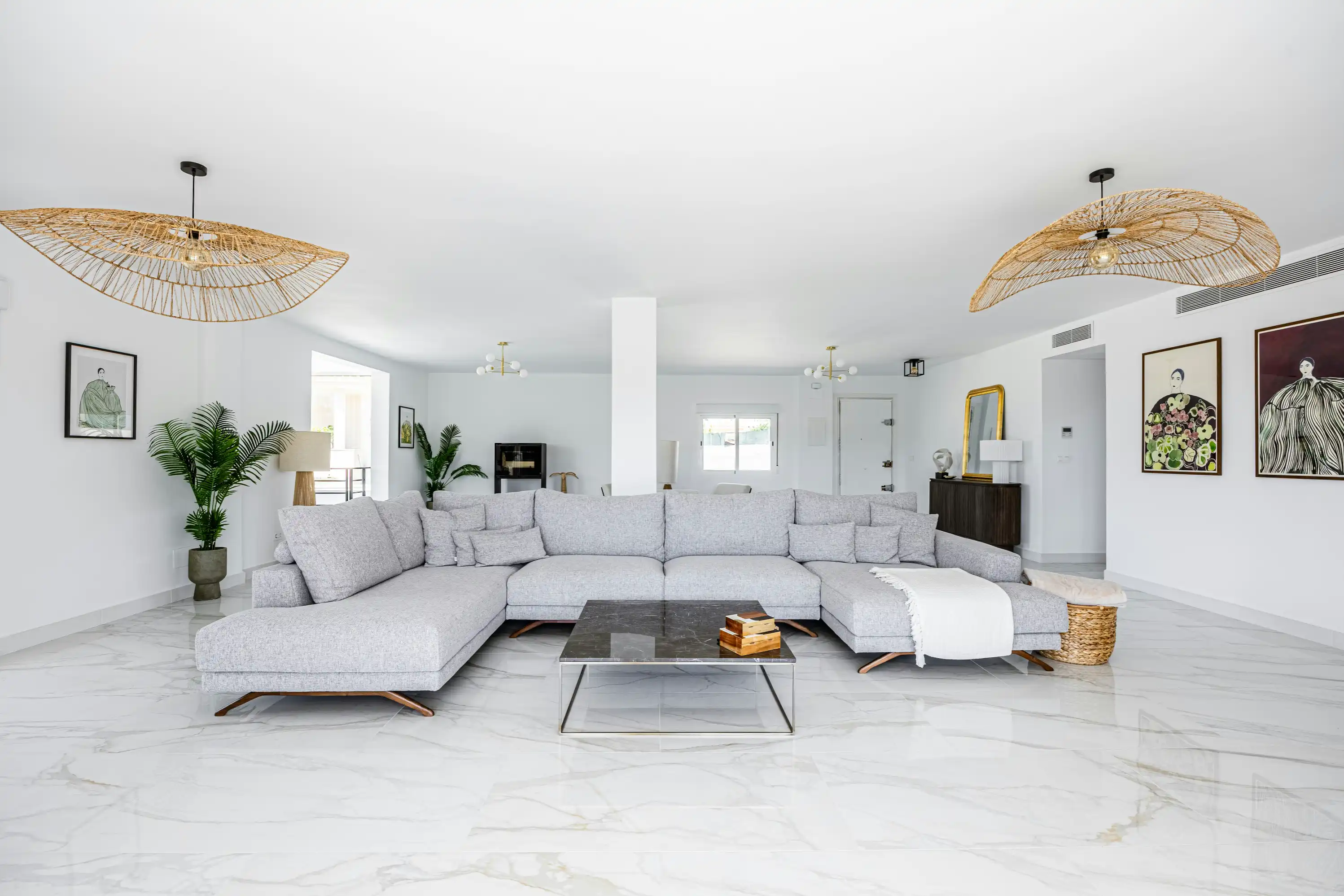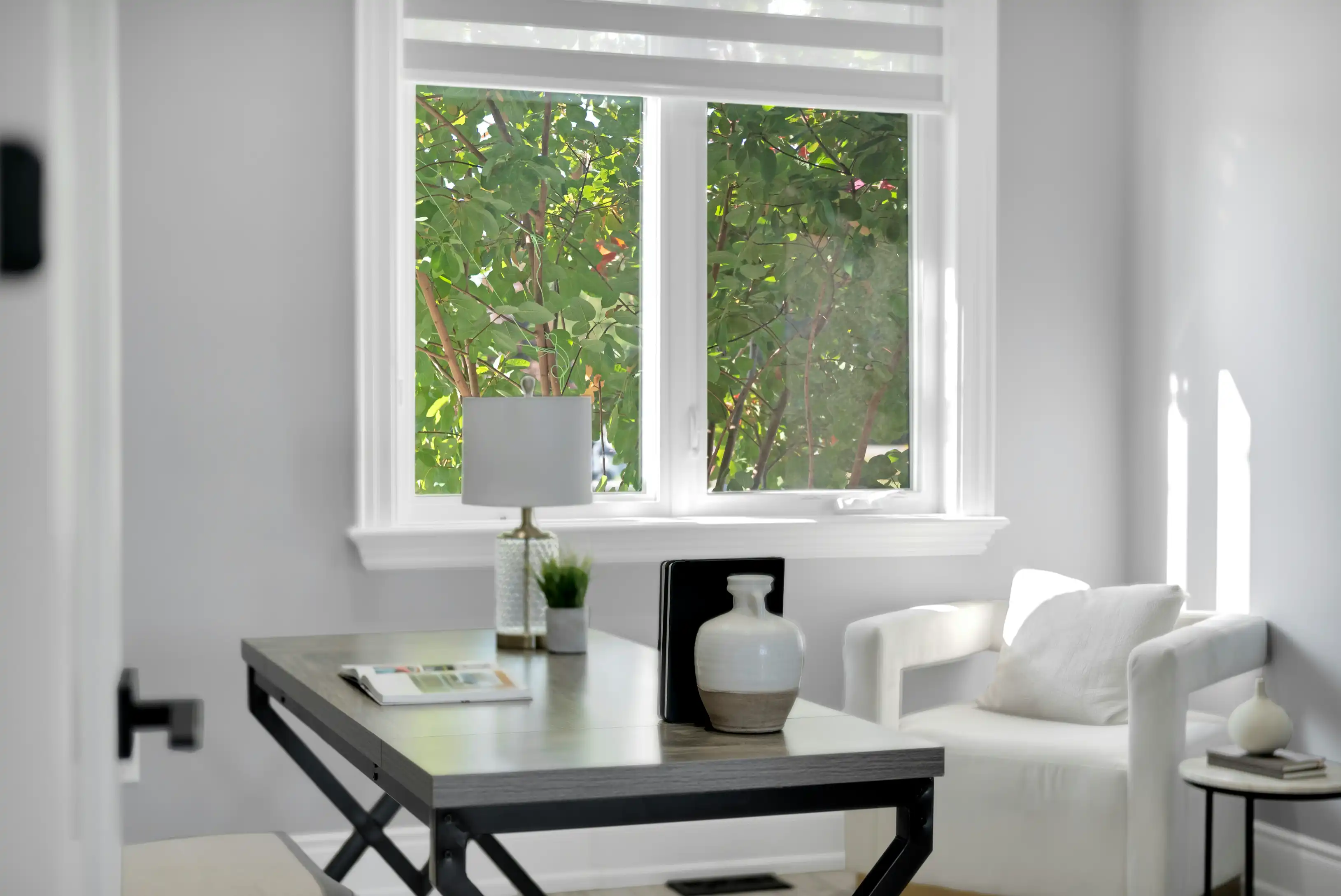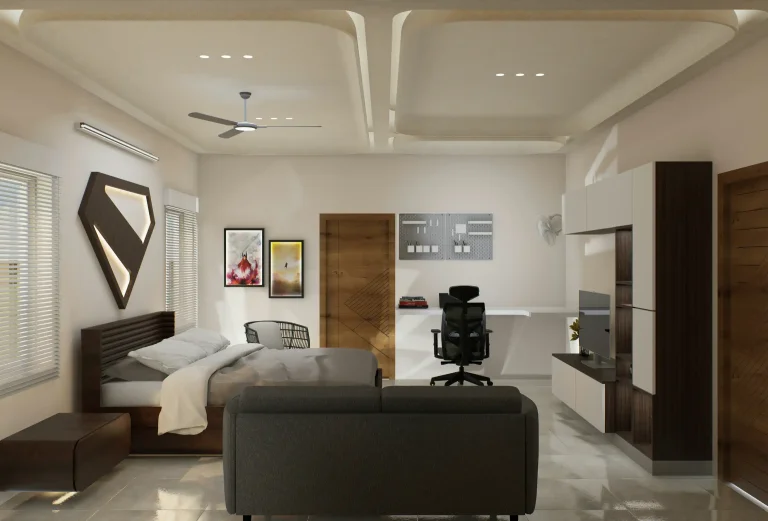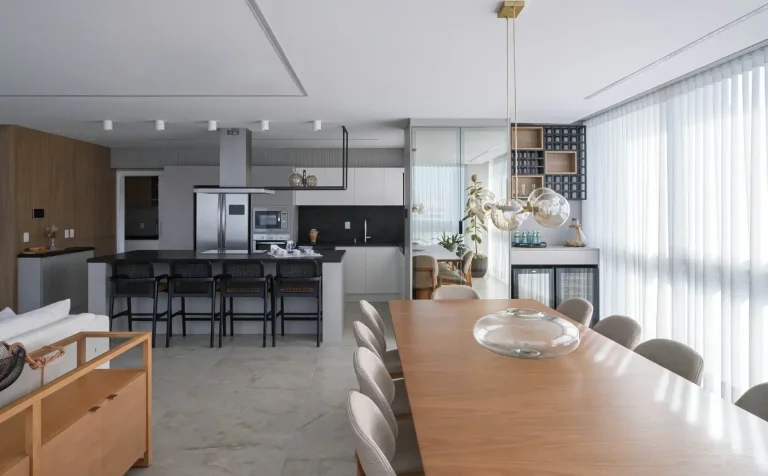Modern Airbnb Design: Contemporary & Stylish Rentals
Imagine a potential guest scrolling through Airbnb listings in your area. Their thumb moves rapidly, eyes scanning each property for seconds before moving on. What makes them pause, look closer, and click? It's your cover photo showcasing your modern Airbnb design.
In today's saturated short-term rental market, location and competitive pricing are the baseline. Properties with generic, outdated, or uninspired interiors are ignored, resulting in lower occupancy rates and revenue potential. Your property might be in the perfect location, but if your design doesn't capture attention, you're leaving money on the table.
This is where strategic modern design becomes your competitive advantage. It's not just about creating a nice-looking space; it's about engineering a photogenic, desirable experience that translates into more bookings and a higher Average Daily Rate (ADR). This guide will cover the principles of modern design for Short-Term Rentals (STRs) and show you how to apply them for maximum profit.
What Is Modern Design?
Modern Design originated in the mid-20th century. It is characterized by clean lines and geometric shapes; natural materials like wood, leather, and metal; an absence of clutter and ornate detailing; and a focus on functionality. It embraces the principle that "form follows function," meaning the design of an object should relate to its intended purpose.
There's confusion between Modern and Contemporary Design. Modern refers to a mid-1900s style, while contemporary Airbnb style means "current" - what's popular now. Today's contemporary style borrows from modernism, incorporating its clean lines and uncluttered approach. For STR purposes, these terms describe spaces that feel clean, current, and thoughtfully composed.
The business case for adopting modern design in your STR is compelling:
- Broad Appeal: Its clean, neutral foundation appeals to a wide range of guests, unlike themed or highly styled designs that can polarize potential bookers.
- Perceived Cleanliness: The uncluttered spaces and simple forms look cleaner and more hygienic, a critical factor in guests' decision-making, especially post-pandemic.
- Creates a Photogenic Airbnb: Modern design's emphasis on light, space, and composition photographs well, leading to standout listing images.
- Timeless Foundation: It provides a base that won't look dated in a few years, protecting your investment and reducing the need for redesigns.
The 6 Pillars of High-Performing Modern Airbnb Interior Design
Achieving a successful modern look isn't about randomly selecting minimalist furniture. It requires following clear principles to create a cohesive, appealing space. Below, we break down essential Airbnb interior design ideas for serious hosts.
1. The Color Palette
Modern design starts with a neutral color palette. Whites, creams, soft grays, and beiges create a sense of space and light that makes smaller rooms feel larger and more inviting, both in person and in photographs. These tones reflect light beautifully, making spaces appear brighter and more welcoming in your listing photos.
This neutral base doesn't mean your space should feel sterile or boring. You can add depth and personality with 1-2 carefully chosen accent colors through accessories like throw pillows, artwork, or a single feature wall. Current trends favor earthy greens, deep blues, and warm ochres that add character without overwhelming the space.
Pro Tip: Invest in high-durability, scrubbable eggshell or satin finish paint for walls. These withstand frequent cleaning between guest stays and maintain their fresh appearance longer than flat or matte finishes.
2. Furniture
Modern furniture features clean lines, simple silhouettes, and natural finishes. Consider a walnut-finish media console with minimal hardware, a sofa with square arms and tapered legs, or dining chairs with gentle curves. These pieces create visual interest without the ornate detailing of traditional styles.
When selecting furniture for your STR, prioritize durability. Commercial-grade or highly-rated performance fabrics (like Crypton or Sunbrella) cost more upfront but maintain their appearance through many guest stays. Choose multi-functional pieces: a sleeper sofa for extra guests, a coffee table with hidden storage, or dining chairs that can serve as desk seating.
Avoid overstuffed furniture that makes spaces feel smaller, ornate carving or detailing that collects dust, and "fast furniture" that shows wear quickly. In an STR, your furniture will experience years of wear in months.
3. Space & Flow
A key principle of modern design is "less is more," especially for STRs, where guests need to navigate an unfamiliar space easily. A clear path through each room is essential; avoid filling corners with furniture or decor.
Avoid cluttering surfaces with unnecessary items. A nightstand should include only a lamp, alarm clock, and charging station, not brochures, decorative boxes, and knick-knacks often seen in amateur rentals. This restraint creates a sophisticated aesthetic, impacts perceived cleanliness, and eases cleaning for your turnover team.
The art of subtraction means being intentional about every item in your space. Ask yourself: "Does this serve a purpose for my guests, or am I adding it to fill space?" If it's the latter, it doesn't belong in your modern STR.
4. Lighting
Proper lighting transforms a well-designed space into an exceptional one, yet STR hosts often overlook it. A modern lighting scheme incorporates three essential layers:
- Ambient Lighting: This is your main overhead source. Opt for simple geometric flush mounts or recessed lighting instead of dated ceiling fans with light kits or ornate fixtures.
- Task Lighting: Focused light for activities is crucial for guest satisfaction. Include reading lamps by beds, under-cabinet kitchen lighting, and good bathroom mirror lighting.
- Accent Lighting: These fixtures add drama and highlight design features. Consider a spotlight on art, a sculptural floor lamp, or LED strip lighting under a floating vanity.
Choose warm dimmable LED bulbs (2700-3000K) for all lighting to let guests adjust the mood and lower electricity costs.
5. Materials & Texture
A common criticism of modern design is that it can feel cold or sterile. The solution is to incorporate textures that add warmth and sensory interest while maintaining clean lines.
Layer in natural and tactile elements: a soft wool area rug anchoring a seating area, linen curtains that filter light, a leather accent chair that develops character, velvet pillows for luxury, live plants for life, and wooden decor for warmth.
This textural variety creates a rich, layered look that feels luxurious and cozy. This combination photographs well and makes guests feel they have chosen a high-end accommodation.
6. Art & Decor
Modern design favors quality over quantity in decorative elements. Instead of cluttering walls with numerous small pieces, choose one or two large-scale abstract or contemporary art works that make a statement. This creates more visual impact while maintaining the uncluttered aesthetic of modern spaces.
Decor should be intentional and functional. A beautiful tray on the coffee table holds remotes and coasters, minimalist ceramic vases add interest to a dining table, and a sculptural bowl provides a place for guests to drop keys and sunglasses.
Consider incorporating local artwork or photographs of landmarks in modern frames to create a unique sense of place that guests appreciate and mention in reviews while maintaining your modern aesthetic.
The Competitive Edge of Data-Driven STR Design
Following these design principles will give you an edge over 90% of listings. Top investors move from principles to data to dominate their market.
Data-driven design removes the guesswork from property decisions. This approach uses market-specific data, top-performing amenities, seasonal booking trends, guest demographics, and competitor rates to make design choices that generate the highest ROI, instead of relying on personal taste or trends.
STR Cribs, founded in 2020 by Joshua Lewis, specializes in this. The industry-leading company pioneered a methodology that removes guesswork from the renovation process. Instead of designing a beautiful space, they engineer a high-performing rental asset.
They analyze local market data to determine design decisions. This includes whether your bedroom should have a king bed or two twins to maximize occupancy, if a dedicated workspace will attract more business travelers at higher rates, or if a high-end coffee station will justify a premium nightly rate in your neighborhood. It's about meeting a specific, data-verified demand rather than following generic advice.
Conclusion
A modern Airbnb design is key to standing out in today's competitive market, and a data-driven design will maximize your revenue potential. Your property is not just a place to stay; it is a business asset that should be strategically engineered for profit. Its design is your most powerful lever for increasing returns.
Stop guessing what guests want and start building a property engineered for 5-star reviews and maximum profit. The STR Cribs team is ready to create a data-backed plan to transform your property from another listing to a top-performing investment.


.webp)





